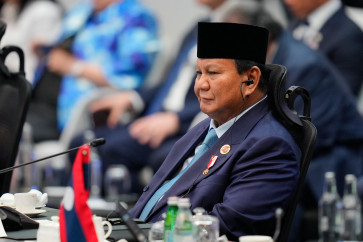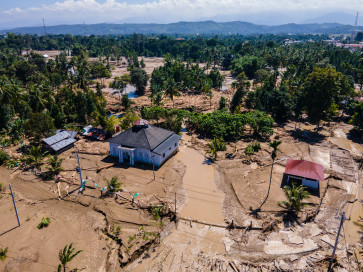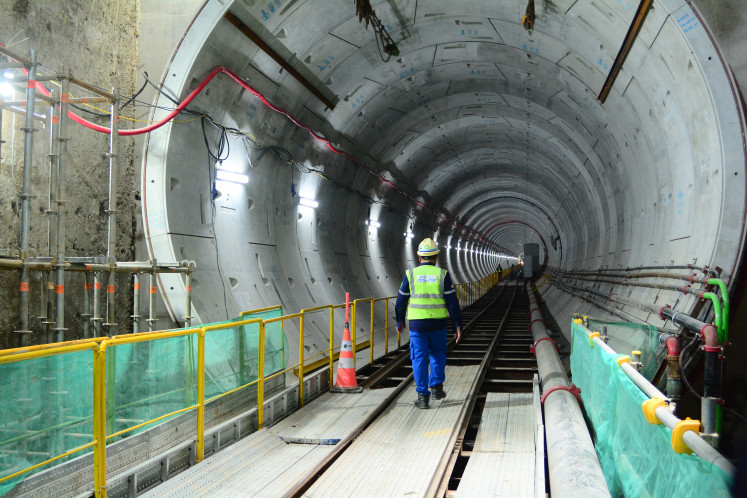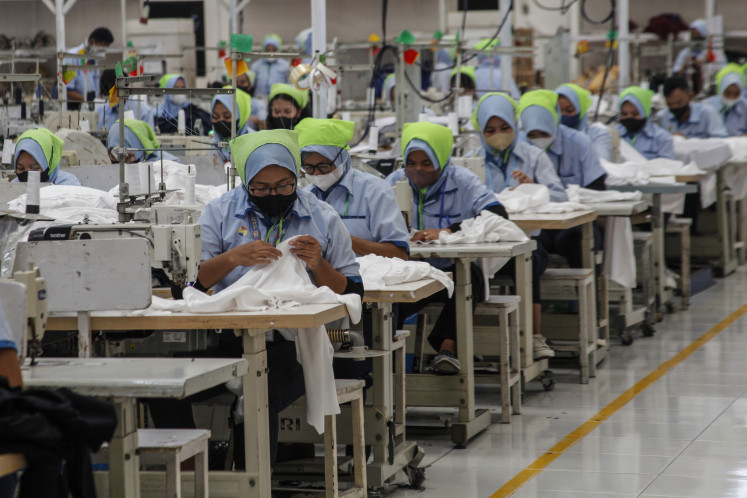Popular Reads
Top Results
Can't find what you're looking for?
View all search resultsPopular Reads
Top Results
Can't find what you're looking for?
View all search resultsFlaws in air safety revealed
As Soekarno-Hatta International Airport struggles to cope with the huge expansion in air travel, air traffic controllers have warned of the risk of aircraft collisions and accidents unless their workload is eased
Change text size
Gift Premium Articles
to Anyone
A
s Soekarno-Hatta International Airport struggles to cope with the huge expansion in air travel, air traffic controllers have warned of the risk of aircraft collisions and accidents unless their workload is eased.
The Indonesian Air Traffic Controllers Association (IATCA) complained on Wednesday about the decision by state-run air navigation company AirNav to regularly allow 84 take-offs and landings an hour at the airport, as occurred recently during the Idul Fitri exodus.
Not only is this beyond the airport’s capacity to handle, the IATCA claims that it violates Transportation Ministerial Instruction No. 8/2016, which caps the use of the airport’s runways at 74 aircraft per hour in addition to four irregular flights for emergencies.
“By allowing this, the chance of an accident will increase and air traffic controllers will be the ones who are blamed,” Andre Budi, the deputy chairman of IATCA Jakarta, said.
IATCA’s revelations came amid a string of reports of near collisions, with the latest occurring only last month.
AirNav confirmed that two aircraft came close to colliding with each other on the runway of Soekarno-Hatta on June 18.
Air traffic controllers had to order a Garuda flight to abort its landing as there was still a Sriwijaya Air aircraft on the runway that had earlier aborted its take-off.
Last year, two Lion Air planes collided on the ground at Soekarno-Hatta airport, no injuries were reported in the incident.
Soekarno-Hatta airport in Tangerang, Banten, is one of the busiest airports in Southeast Asia, serving more than 55 million passengers last year, with 1,200 flights per day.
Andre said that most air traffic controllers would require more training to handle the high traffic that had begun to build up since 10 days before the Idul Fitri holidays and which had yet to recede, even though the peak travel season had passed.
Andre suspected the soaring traffic may be a result of airlines bending regulations to add more flights beyond their approved slots.
IATCA has lodged complaints with AirNav and the Directorate General for Aviation at the Transportation Ministry, but have yet to receive any response.
Andre also accused AirNav of intimidating air traffic controllers by inviting military personnel to monitor their work last night.
“We want the government to return to the pattern of 72 aircraft per hour to prevent accidents.” Andre said.
IATCA also suggested the government provide more training to air traffic personnel and improve airport infrastructure.
AirNav corporate secretary Didiet KS Radityo insisted there was no violation of regulations as the Transportation Ministry had updated its instruction in No. 16/2017, allowing 81 take-offs and landings effective from July 20.
“The increase was to accommodate demand from the airlines in line with the growing economy and tourism,” he said.
“Eighty-one aircraft per hour is the new maximum standard. But on average, the load usually stands at 74 to 75 per hour,” he said.
Didiet said the recent ministerial instruction had been adjusted to better serve flight schedules and to avoid congestion at the airport by distributing the flights away from the busiest times.
The instruction is also based on input from the Transportation Ministry’s coordinating unit for flights slots, state airport operator Angkasa Pura, and a consulting firm for London’s Heathrow Airport.
The adjustment to the traffic, Didiet said, was not only designed to tackle the problem at Soekarno-Hatta airport, but also at the destination airports, as well as for ground-handling facilities.
AirNav also denied the intimidation allegation, saying the management’s role was to protect air traffic controllers from security threats.
Aviation expert Samudra Sukardi said that aside from the need to provide more staff, AirNav’s infrastructure was also in dire need of an upgrade.
Samudra said that since its establishment in 2012, AirNav had seen frequent shake-ups in its management, indicating the company’s human-resource capacity was insufficient.
Indonesia’s aviation market has grown by double digits in the past 10 years following the appearance of several low-cost carriers that have made air transportation more affordable.
Indonesia received poor marks in a 2014 safety audit by the United Nations aviation agency due to insufficient staffing. The last time the country witnessed a major civilian aircraft accident was in 2014 when an AirAsia flight went down in the Java Sea, claiming the lives of all 162 people on board. (dis)










